
And then swipe and deploy their best keywords on your website
Well, in today’s post, I will show you how.
In this quick-start competitor keyword research guide, I will walk you through the tips, tactics, and strategies you can use to identify your competition’s most promising keyword terms.
And how to determine which of their keywords you should target and which you shouldn’t.
I’m covering:
- How to identify your competitors
- How to find the keywords your competitors rank for
- How to uncover competitor keywords that don’t fulfill search intent
- How to find keywords your competitors think are worth paying for
- How to use these competitor keywords to your advantage
- And much more…
Ready to find new and rank-boosting keywords to include as part of your overall search strategy?
Let’s get started.
How does your website score? Get a free instant audit that will uncover the biggest SEO issues affecting your site, and how to fix them.
What is Competitor Keyword Research?
Competitor keyword research is the process of identifying valuable, relevant keywords your competitors are targeting to improve their rankings in organic search.

While similar to run-of-the-mill keyword research, which identifies the popular words and phrases your target audiences use to find your service and products in the SERPs, competitor keyword research is all about analyzing the keywords your competitors rank for.
Which begs the question, why go through the trouble of uncovering your competitor’s keywords if you’re already researching keywords of your own?
We’ll cover that next…
Why Competitor Keyword Analysis Matters
Whether it’s pricing, messaging, or product experience, knowing what the competition is doing is critical to staying relevant in business.
Organic search is no different, particularly when it comes to keywords.
Gaining insights into your competitor’s organic keyword approach can help uncover new content opportunities or gaps in your organic SEO strategy.

In other words:
Competitor keyword analysis will show you what content or topics your competitors rank for and the keywords they target to earn high positions in SERPs.
By mastering competitor keyword analysis, you’ll better understand your industry.
And gain actionable insights that result in higher SERP rankings and more organic traffic.
Not only that.
You’ll steal valuable traffic and customers from competitor websites when you do it right.
With that said…
Let’s jump into my five-step process for finding high-intent, high-volume keywords your competitors rank for.
Your Step-by-Step Guide to Uncovering Competitor Keywords
The good news is competitor keyword analysis isn’t rocket science.
But still:
If you’ve ever performed any keyword research, you know how easy it is to fall into a data wormhole when undertaking even basic keyword research projects.
Don’t worry. I’ll stop you from getting stuck in the keyword research quagmire.
This five-step process will ensure you uncover high-potential competitor keywords fast.
(1). Know Your Audience
Wait! Don’t move too quickly.
Before finding and analyzing any competitor keywords, you must understand who your audience is.
Failure to comprehend who you are targeting will result in your competitive keyword analysis dying before it starts.
When you first pinpoint your specific audience, you avoid the typical pitfall of simply trying to rank for the highest volume search terms. Focusing on the right target audience increases the relevance of your keyword efforts, improving your ability to drive quality traffic to your site.
Whether it’s traditional keyword research or competitor analysis, your crucial first step is answering these questions:
- What kind of problems does your product/service solve?
- Who is looking for your products or services?
- How does your product/service differ from the competition?
- What is your audience’s demographic profile?
- What keywords are essential to your positioning in the market?
Answering these questions will help better refine your keyword research efforts.
This is especially important given search engines are the number one channel through which consumers discover new brands:
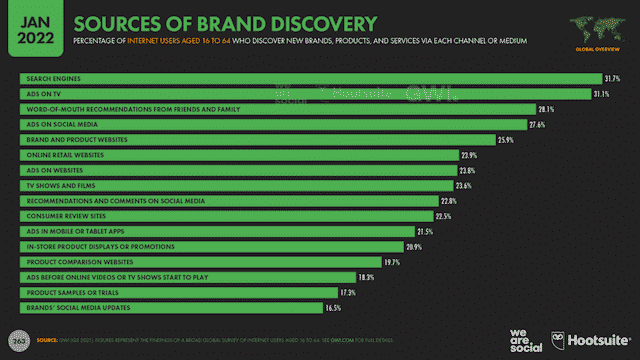
What’s more, answering these questions will also help you uncover who your competitors are.
At the same time, consider running an SEO audit of your website. Ensuring your site is built for maximum search visibility is key to competing for those precious top 10 organic blue links.
(2). Identify Your Competitors
When defining your SEO competitors, it’s helpful to differentiate between direct and indirect competitors.
Understanding your direct competitors.
Your business’s direct competitors will offer similar products and services as you.
Say, for example, you run a local coffee shop.
Your direct competitors are going to be other coffee shops in your local area.
These are the same businesses that appear in Google’s local pack when you search for neighborhood coffee shops.
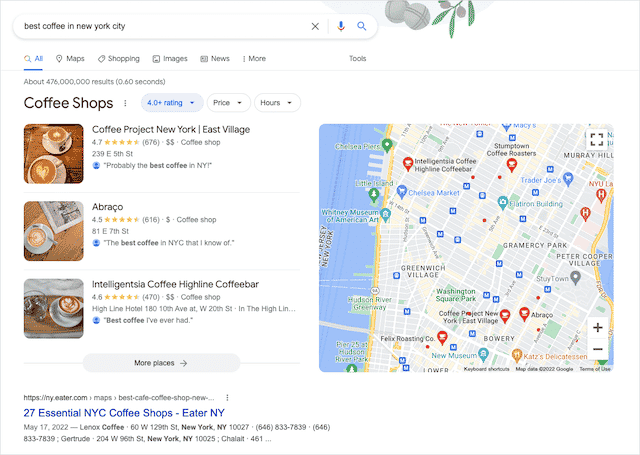
You can also turn to Google to uncover your direct competitors if you are a global brand.
By using the “related:” search operator, you’ll find similar domains to your own.
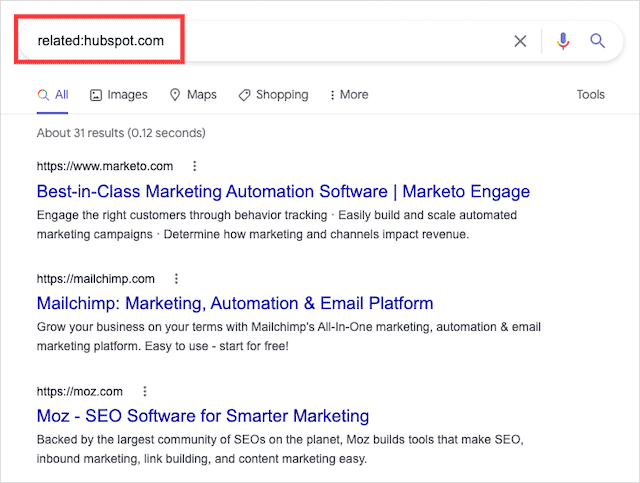
A quick word of warning:
This type of advanced Google search operator typically works best for larger domains.
If your website is small, you may find the search command returns little to no results.
As you can see for our client Cafu, the related search operator isn’t helpful:
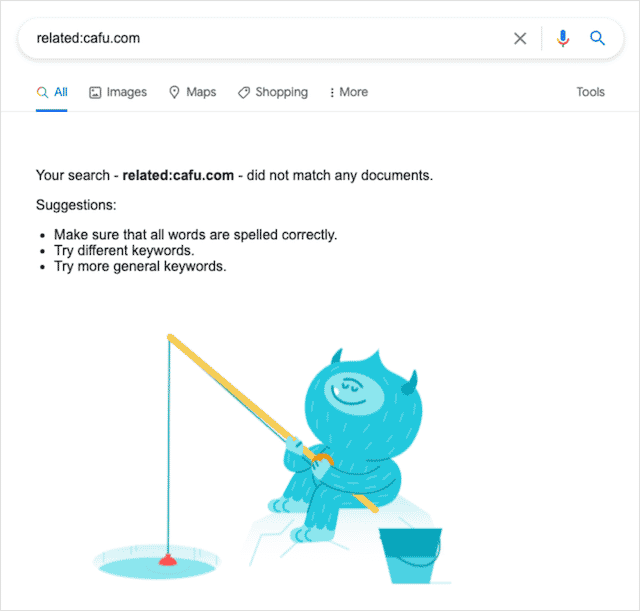
But, don’t worry. There are other methods you can use to find competing domains.
Understanding your indirect competitors.
Indirect competitors are websites that rank for similar keywords but may not compete (directly) for your customers.
Using our coffee shop example, indirect competitors would be:
- Online food magazines that publish how-to articles on brewing coffee at home
- Supermarkets that sell ground coffee
- Online subscription coffee shops
- Local bakeries or sandwich shops that sell coffee alongside takeaway food
These business categories are considered indirect competitors because while they aim to solve the same problem you are (providing brewed coffee), their product offerings or services differ from yours.
They target a different audience segment (consumers who drink coffee at home).
First, I will show you how to find indirect competitors using Ahrefs.
Inside Ahrefs, navigate to ‘Site Explorer’ and ‘Competing domains,’ then pop your domain in the search box. Ahrefs will spit out a list of domains with overlapping keywords.

In other words, the domains ranking for many of the same terms as you.
Next, here’s how to find organic competitors using Semrush.
Log in, navigate to ‘Organic research,’ add your domain to the search box, and then scroll down to ‘Main Organic Competitors.’
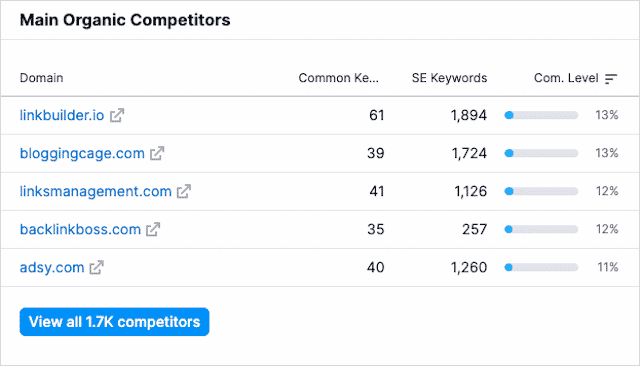
Like Ahrefs, Semrush will show you a list of websites with common keywords.
With that, you now have a list of indirect competitors.
Learning from your indirect competitors.
Knowing your indirect competitors will help you keep an eye on the latest trends in your industry or niche.
Let’s explore this further with our coffee shop example.
A trendy coffee brewing method that has garnered much interest in recent years is pour-over coffee. A quick scan of indirect competitors shows many articles published on the topic, from the different brewing methods to how-to guides.
And a quick Google Trends search confirms the enduring popularity of “pour-over coffee.”
<script type="text/javascript" trends.embed.renderExploreWidget(“TIMESERIES”, {“comparisonItem”:[{“keyword”:”pour over coffee”,”geo”:””,”time”:”2004-01-01 2022-06-24″}],”category”:0,”property”:””}, {“exploreQuery”:”date=all&q=pour%20over%20coffee”,”guestPath”:”https://trends.google.com:443/trends/embed/”});By monitoring your indirect competitors, you can quickly jump on fashionable trends like pour-over coffee and finesse your product offering or messaging to provide what these audience segments seek.
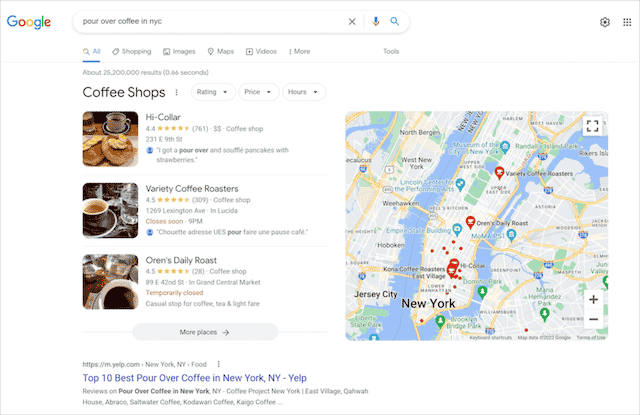
In summary:
By learning from your indirect competitors, you gain the opportunity to leverage new search trends and drive more significant traffic share from the SERPs.
Now that we clearly understand the different competitor types let’s analyze what specific keywords they’re ranking for.
(3). Gather Your Competitor’s Keywords
You’ll need a third-party SEO tool to best research your competitor’s keywords.
Several well-known keyword research tools will help you find your competitor’s most profitable keywords.
My go-to is Ahrefs.
Using Ahrefs, we can plugin our local coffee roaster and its competitors into Site Explorer and see what keywords our competitors rank for.
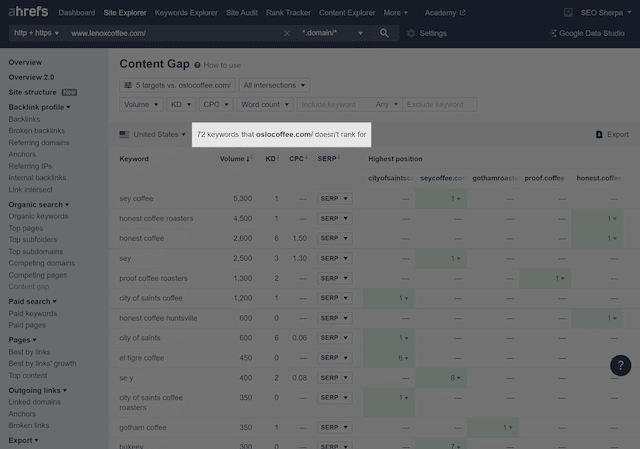
As we can see, there are 72 keywords that our coffee roaster is not even appearing in local search. And at a glance, there are several profitable keywords for which the coffee roaster should compete.
(4). Review Your Results
With our competitor keyword list in hand, let’s review what we have and curate the keywords to our specific needs.
Identify high competition keywords.
Search terms with moderately high keyword difficulty (KD) could be challenging to rank.
An excellent example from our list would be “roasters coffee cafe.”
While a seemingly broad, informational keyword, an analysis of the search results tells a different tale.
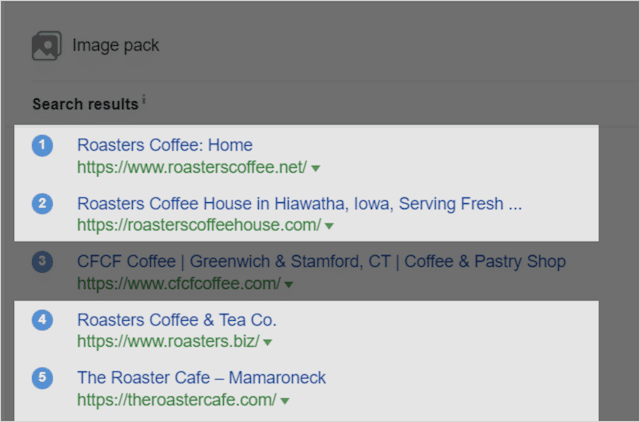
Looking at the SERPs for that particular keyword, we can see that four top-5 results contain the keywords “roasters coffee” or a variation in their domain name.
This tells us the search intent behind this keyword is predominantly branded.
Note: This is why choosing an SEO-friendly domain name for your business is essential.
These top five search results also have impressive backlink profiles and domain authority.
Not to mention, these businesses have employed title tag best practices (an element of on-page SEO), including a variety of the search term “coffee roaster” in their title tag.
With its high keyword difficulty and tough competition, it’s safe to say that this keyword may not be worth pursuing.
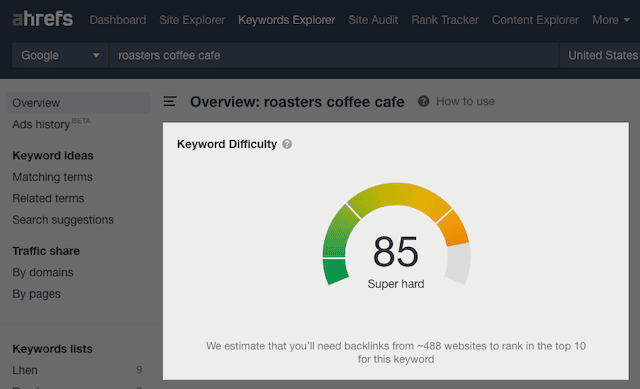
Using this example, you can eliminate all high KD terms your business may have difficulty competing for.
Once that’s done, let’s focus on search term relevance.
Pro tip:
Use Ahrefs Site Explorer to determine the ideal Keyword Difficulty max your site can compete for.
To do that, log in to Ahrefs, navigate to Site Explorer and then ‘Organic keywords.’
This will show you the list of organic keywords your site ranks for. Next, filter the table to show ‘Main positions only’ and order the ranking from highest to lowest.
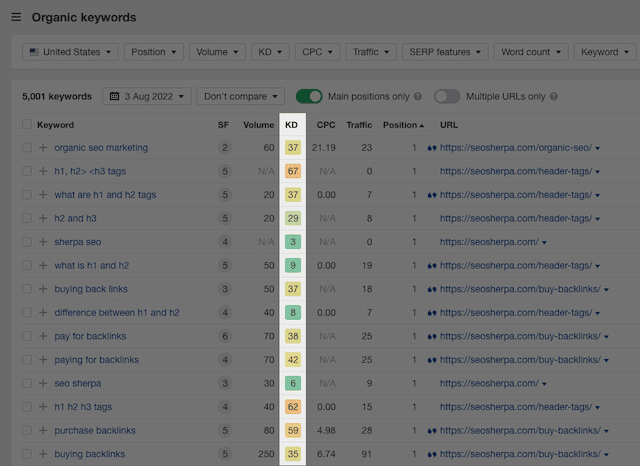
As you can see in the column, excluding a few exceptions, the SEO Sherpa site doesn’t consistently rank in the top positions for keywords above a KD 60.
So if I were looking to identify rankable keywords, I’d set my KD max around 50 to 60.
Eliminate keywords that don’t align with your business.
With keyword difficulty considered, you can now start to curate your keyword list to focus on only the most critical to your SEO efforts.
Of course, you want to concentrate on keywords relevant to your business.
For our New York-based coffee roaster, example keywords that can be eliminated from consideration are:
- Persons of interest (e.g. luis ordonez)
- Merchandise (e.g. coffee shop hats, gotham hat)
- Geo-targeted terms (e.g. coffee roasters in nashville tn)

Our coffee roaster will have difficulty ranking for these keywords because the business has little to no associations with these search terms.
For example, “coffee shop hats” is a product-focused search term. Because our roaster doesn’t sell merchandise, there is no natural way for us to target this term via our content or on-page SEO.
Other keywords to eliminate are “branded keywords.”
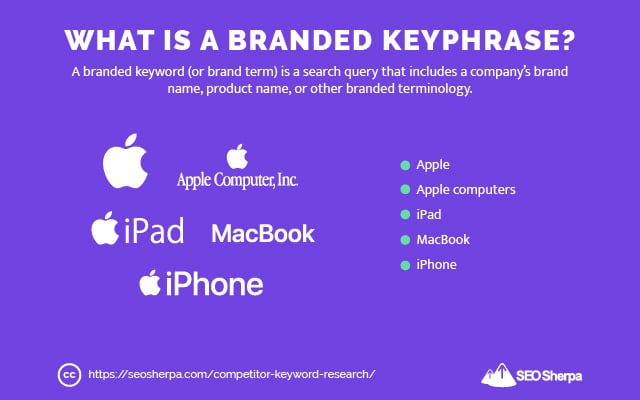
In our competitor keyword list, examples of branded keywords would be “gotham coffee,” “proof coffee roasters,” and “all saints coffee.”
Trying to rank for these keywords would be a significant uphill challenge as search intent favors the brand itself.
This step in competitor keyword analysis should not be overlooked. Keyword research should be strategic and intentional. The keywords you select should be both targetable and support your brand’s conversion funnel.
Find content gaps on your website.
After all irrelevant and high-difficulty keywords have been eliminated from your list, it’s time to start reviewing the keywords for ranking opportunities.
Glancing at the rest of the keywords, there are several cracks in our coffee roaster’s website that can be quickly remedied.
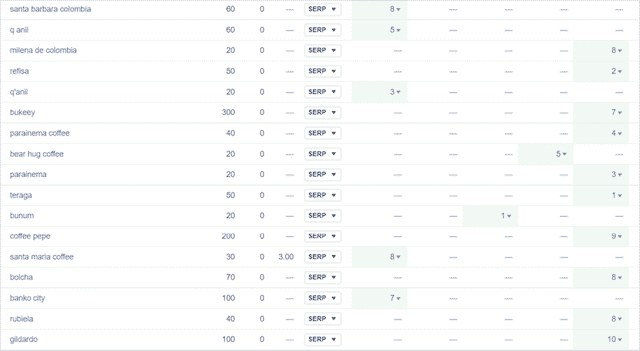
These keywords represent the various coffee beans or growing regions our competitors’ audiences currently search for.
Looking at our coffee roaster’s product page, there’s no obvious SEO optimization.
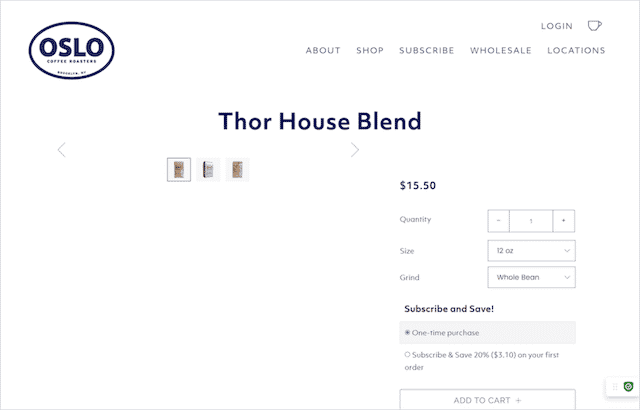
As you can see, there’s zero product copy, meaning little to no keyword opportunities. There’s also no structured data or customer reviews and other user-generated content.
Leveraging an SEO content framework would enable our roaster to start competing for product-specific keywords and help drive users to a purchasing decision.
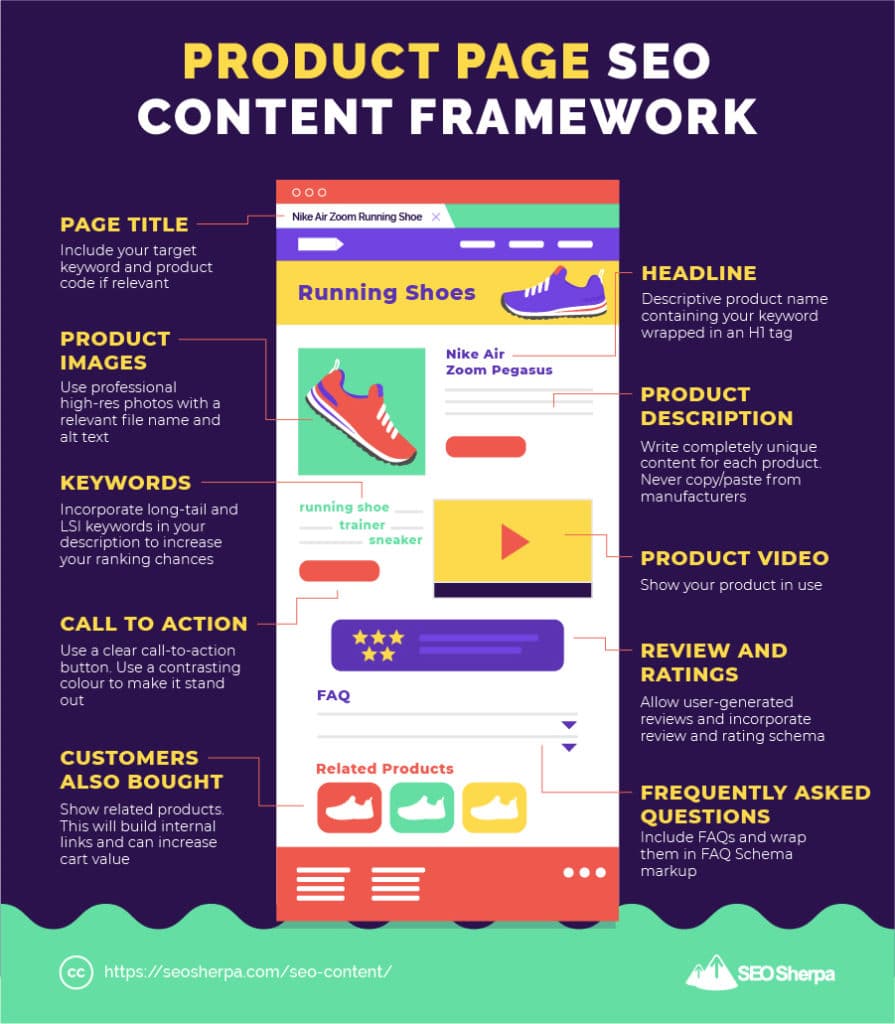
At this point, you may feel you have enough keywords to target your website competitively.
But, if you want to go beyond organic traffic, let’s do a quick rundown of why you should also peek into your competitors’ paid advertising strategy.
(5). Look at Paid Keywords
Organic research isn’t the only way to find competitor keywords; you can also explore their paid keywords.
Running your competitors’ websites through a Paid search tool can help you uncover keywords that your competitors consider highly profitable.
I like Semrush’s Advertising Research for this:

It shows the keyword and traffic potential for each PPC term.
Even if your company doesn’t have the budget to compete for these paid keywords using Google Ads, they can be leveraged in bottom-funnel, commercial-intent content like e-commerce product pages.
For example, say your competitor is running an advertising campaign for the term “V60 coffee maker”.
Rather than competing in advertising budget, look into the research-intent queries related to this commercial-intent keyword.
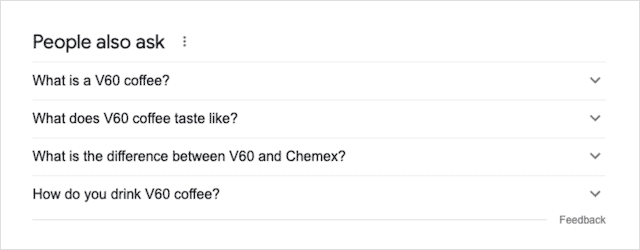
Creating a blog post explaining how to brew coffee in a V60 coffee maker or making a listicle of the best pour-over coffee makers will enable you to target your competitor’s paid keyword and gain an opportunity to appear in other SERP features like the People Also Ask box.
Over To You!
I hope you can use this competitor keyword analysis guide to your advantage.
But remember, much like other SEO tasks, competitor keyword analysis will require a refresher from time to time.
Doing a quarterly or semi-annual analysis of your competitors may help to uncover new content topics or keyword opportunities that you may have missed in the past.
Now I’d like to hear from you.
Have you ever done competitive keyword analysis previously? What were the results of your efforts?
Leave a comment below!










Leave a Reply